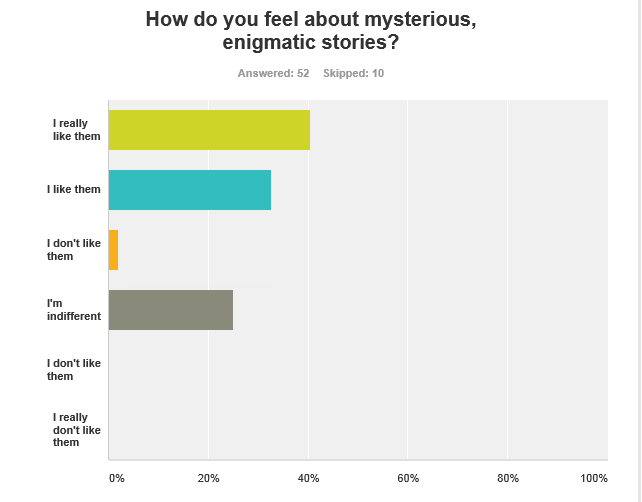We hoped to get a sense of whether our genre would be popular in the public opinion, and we sadly received mixed results. Only 50% of people were interested in psychological horror films. As a result we decided to merge several genres into one, to both integrate multiple stylistic features which we found successful in our test shoot, and also to satisfy as much of the public as possible.
Thankfully we received a far more positive response to whether the public like foreign films, with the greatest percentage saying they were indifferent and a higher percentage of people saying "I like them" than not liking them. This meant we could confidently make the film in a foreign language and not receive a negative response.
This question was largely unsuccessful in retrieving the information we were expecting as the results indicated that a large portion of the public misread the question. Many people answered with English horror films that had been dubbed over, or many replied with ANY horror film spoken in English (something entirely unhelpful to us).
This was interesting for us, as it showed us who the audience expects to be the protagonist in a psychological horror. This meant we were creating a character that was a progressive representation of men as it showed not all males have to be macho and gung-ho to be masculine, our character is scared witless in our opening scene and if this had been made into a feature film we all agree he would use his intellect and quick-thinking to "save the day".
The results showed a remarkably positive reply, with the vast majority of people saying they "really like them" or just "like them" with only 25% saying they did not like them. This was good news to us as we knew that the theme of enigma would be prevalent in our film, so these results were very reassuring.
As with the "What horror films have you seen" question, this question received very mixed results. Needless to say we worked through the eventual 63 replies of varying relevance and discovered confusion at every turn, but the majority still proved useful to us. We since decided to change our title to "Overseer", so these results are no longer valid to our title.





































